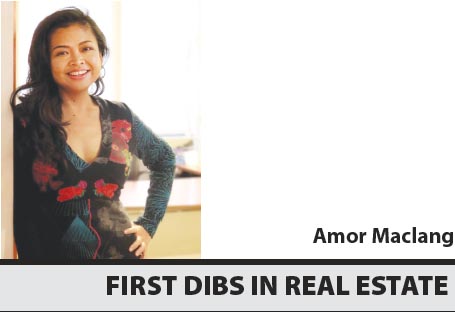THE prefab industry is one of those construction technologies taking the real-estate industry by storm.
It’s become more relevant with the rise of retail and commercial businesses all over the country. Location is set, target market identified and budget allocated. But the actual construction is giving you pause. The rise of many food markets all over the country has given rise to the use of patented luxury container vans.
“There’s a reason most of the establishments like food parks we see nowadays make use of container vans,” said Ina Soriano-Bautista, president of Prefab.ph. “For one, it’s more cost-efficient—being almost 50 percent cheaper than traditional construction, and two, it can be delivered in as fast as three days!”
And food parks aren’t the only business options that can make use of luxury container vans. They can be turned into office hubs, showrooms, warehouse and factory spaces, clinics, barracks even dormitories and low-cost housing. If you want to implement your real estate or building requirements in a faster, more reliable and cost-efficient manner with less headache in supervising labor and managing timetables.
The basics
Traditional construction is basically the carpenter crew centric model that we all grew up with. Here, the house is constructed from the ground up, all on site. This is in contrast to prefab where the construction of modules takes place offsite,” shared Bautista. These modules are made using machines with material that are laser measured and cut according to exact specifications. From the factory environment, the modules are then delivered on site.
“For businesses, these mean a lot of flexibility because your vans can be designed complete with a wall, a floor and a ceiling and have the option of combining multiple units at a lateral or upright configuration.”
Prefab technology is an innovation that is disrupting the construction industry worldwide, and Prefab.ph is the pioneer in the Philippines. Prefab.ph has been providing prefab construction solutions to thousands of projects in the country.
Prefab.ph engages the most professional business partners in long term and mutually beneficial relationships. We deliver consistent, attractive and increasing returns for our clients through superior value propositions and excellent service.
Efficiency of construction
In business, time is money. And when you have a specific timeline in mind, timeliness is and efficiency of construction is essential. It usually takes at least a year for a traditional warehouse or restaurant to be made, making allowances for the processing of the building permit, weather, delivery of materials and availability of the crew.
Herein lies the core advantage of luxury container vans. “Your units can be delivered in three days, and can be installed in as fast as three minutes. That’s something that can never be accomplished by stick builds.” She explained that tasks being done simultaneously through better technology and equipment add to the faster pace of prefab houses.
Durable and long lasting
Prefab construction’s material of choice is steel. Steel is extremely strong, enabling framing to span large spaces without the need for support columns or load-bearing walls. This allows total floorplan freedom in designing your business space.
“The inherent strength of a steel building provides greater protection from damage caused by hurricane-force winds and even earthquakes. When grounded correctly, a steel-framed restaurant also provides additional protection from lightning damage.” Additionally, since steel is not an organic material, it does not attract termites or mold.
Prefab.ph delights its customers with high-quality prefab modules, customized designs and best in-class technical construction with the highest safety standards.
With Prefab.ph structural integrity is not compromised. Virtually any design can be achieved. Prefab.ph structures withstand earthquakes, typhoons and other external natural forces.
Flexibility of design options
“One misconception about prefab is that they offer a very limited range of choices in terms of design—this isn’t the case any longer—the days when prefab meant trailer houses are over.”
Bautista said that Prefab.ph offers the latest engineering innovation and technology in precrafted structures. And if you eventually decide to combine rooms, extend your floor, or add a new wing, doing so with a prefab will be easier compared to remodeling the usual stick build.
A testament to the flexibility of prefab, Bautista said that aside from business spaces, Prefab.ph also provide options for designed homes, warehousing and factories, temporary facilities for housing and offices, barracks, canteens, clinics, dormitories, showrooms, poultry houses, toilet facilities and guard houses.
Sustainability
“As the business owner, you can dictate how environment-friendly the construction can be,” asserted Bautista. “All options can be sustainable depending on the builder. As a homeowner, check if the crew you are working with is using high-quality insulation, roofing, etc.”
For traditional stick builds, it’s all about choosing the right materials. However, prefab homes have better cost efficiencies and less wastage, as they are manufactured under stricter norms. Some companies even go the extra mile by using recycled and renewable materials that help conserve energy. Further, the construction site and its surrounding areas likewise suffer far less disruption compared to a traditional building.
Making the choice
“The choice is ultimately up to the business owner—there are a lot of factors to consider, including cost, location, timing and design preference,” said Bautista. Locally though, a lot of homeowners and construction companies have been making the prefab choice. “Prefab technologies have been steading gaining popularity with speed of development, sustainability and cost-effectiveness being its biggest advantages.”
“It’s all about simplified efficiency. We simplify the process, but we deliver you patented projects by leading architects and engineers. Our commitment is to bring spaces that are carefully crafted, not merely prefabricated.”

